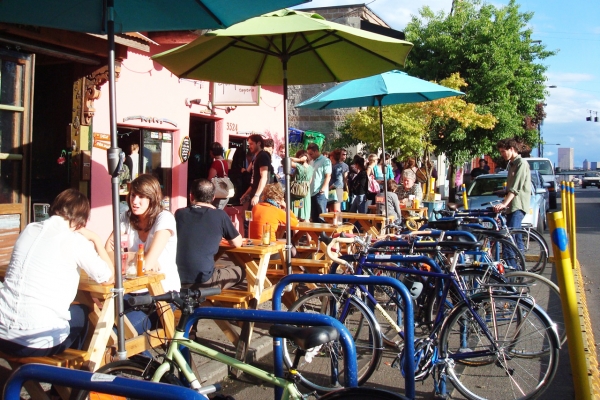Efforts to promote active transportation often come up against concerns, from business owners, that any shift away from automobile use will mean fewer customers or less revenue.
In fact, this research indicates that, for the most part, how much people spend has little to do with what transportation mode they use.
Lead researcher Kelly Clifton of Portland State University, in a recent project, "
Consumer Behavior and Travel Mode Choices," does highlight some key differences between transportation modes. People arriving by bus, bike or on foot average more trips per month to convenience stores, supermarkets, drinking establishments and restaurants than do people arriving by car. They also spend more per month at all types of establishments except supermarkets, where the auto users’ greater spending per trip more than makes up for their fewer trips.
Clifton offered some preliminary findings from this study at presentations and in a TR News article last year. The research gives businesses an understanding of customers arriving by bike, bus and on foot. “The greater number of trips … mean that these are regular customers, returning to the establishment more often,” Clifton writes in the report. “Managers and business owners perhaps have greater opportunities to get to know this segment of their market and cater to this constituency.”
The report also supports earlier research finding that residential and employment density, the proximity of rail transit, the presence of bike infrastructure and the amount of automobile and bicycle parking are all important in explaining the use of non-automobile modes. In particular, the research found that bike parking and bike corrals are significant predictors of bike mode share at the establishment level.
The research showing that cyclists, pedestrians and transit users are competitive customers could reassure people worried about the effects on business if fewer customers arrive by car, Clifton wrote. “This suggests that it is not the mode itself that matters but the characteristics of the people making these choices.”
The research can’t predict the behavior of customers who change how they get around in the future: if more drivers switch to cycling, for example, will they change their spending habits as well? What the research does do is provides empirical evidence to help answer business owners’ questions about how these changes might affect their market shares and revenues.

